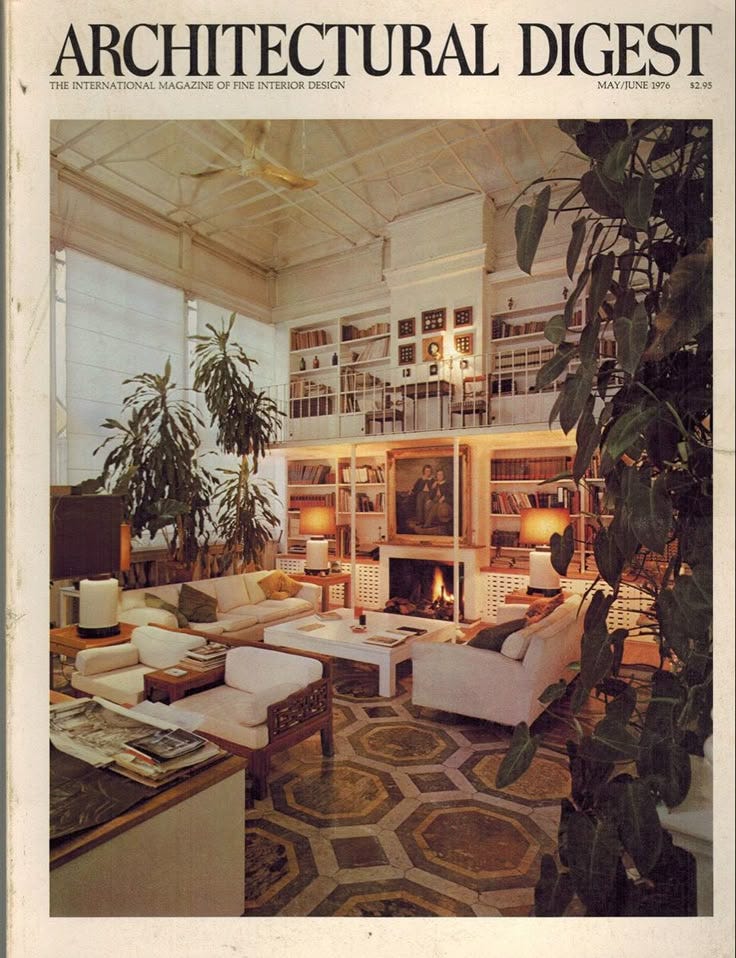The age of conspicuous consumption: the fascination with 'RichTok'
Gen Z humour, Tom Wolfe's plutography, Hot Child in the City and Marie Antoinette.
‘Plutography’ is a highly underrated word. Coined by Tom Wolfe, it means the depiction of the rich. Here’s how he explains it, from a 1989 Times magazine interview:
“Status is an influence at every level. We resist the notion that it matters, but it’s true. You can’t escape it. You see it in restaurants -- not just in New York. People seem willing to pay any amount to be seen at this week’s restaurant of the century. It’s all part of what I call plutography: depicting the acts of the rich. They not only want to be seen at this week's restaurant of the century, they want to be embraced by the owner. But status isn't only to do with the rich. Status is fundamental, an inescapable part of human life… Clothing is a wonderful doorway that most easily leads you to the heart of an individual; it's the way they reveal themselves.”
A voyeuristic fascination of the rich is, well, ~ timeless ~. Than what do we live, than to make sport of our neighbours.
In the not-so-distant past we would have had to read the printed pages of Architectural Digest or Tatler.
And fine art basically existed to depict portraits of the wealthy through commissions. Jean-Marc Nattier in the French courts had a roaring trade because he knew how to angle a sitter just so to capture their perfect angle and to depict them as some mythical goddess with some artfully arranged props. Think of it as Rococo-era Facetune.
But now to be a voyeur of conspicuous consumption is easier than ever before. There are Instagram accounts that repost real estate advertisements and of course, there’s the likes of Rebecca Ma, better known as Becca Bloom on TikTok, Aon Somrutai of Thailand who dresses in over-the-top fashions while walking around with her personal assistant/bodyguard with 2.5 million followers on Instagram and 6.5 million TikTok, or Morgan Stewart even, who has graduated from Rich Kids of Beverly Hills to starting her own label. (It look surprisingly… decent?)
Becca Bloom’s dulcet voice speaks candidly about subjects that seem almost caricatures of the wealthy: serving caviar to cats, and tips and tricks on how to make the most of her special-order Van Cleef & Arpels jewellery pieces. All interspersed with ‘finance girlie’ explainers about economic terms. Some may call her ‘quiet luxury’, but it is too easy to argue that she is anything but (nor, do I think she wants to be called that, either).
The rich unashamedly flaunting their wealth is not new, but why are they more palatable than others? Both are likely to be capitalising on the ‘Crazy Rich Asians’ archetype from the Kevin Kwan books, but are also demure and appear ‘sweet’ and blissfully happy about their lives.
I asked some of my industry friends to comment (anonymously) about this phenomena.
From an in-house partnerships director:
“This content feels calm and controlled in a world of overstimulation. People are fascinated with what real wealth looks like and how they can achieve this on some level. She offers a lifestyle people want to emulate and is aspirational.”
The below is for paid subscribers only. This was one of my favourite essays write.
It includes:
Anonymous comments from a seasoned fashion editor, senior agency creative and the partnerships director.
What can brands take from RichTok
Culture codes
Gold-diggers as aspiration (hello, Meredith from Parent Trap)




